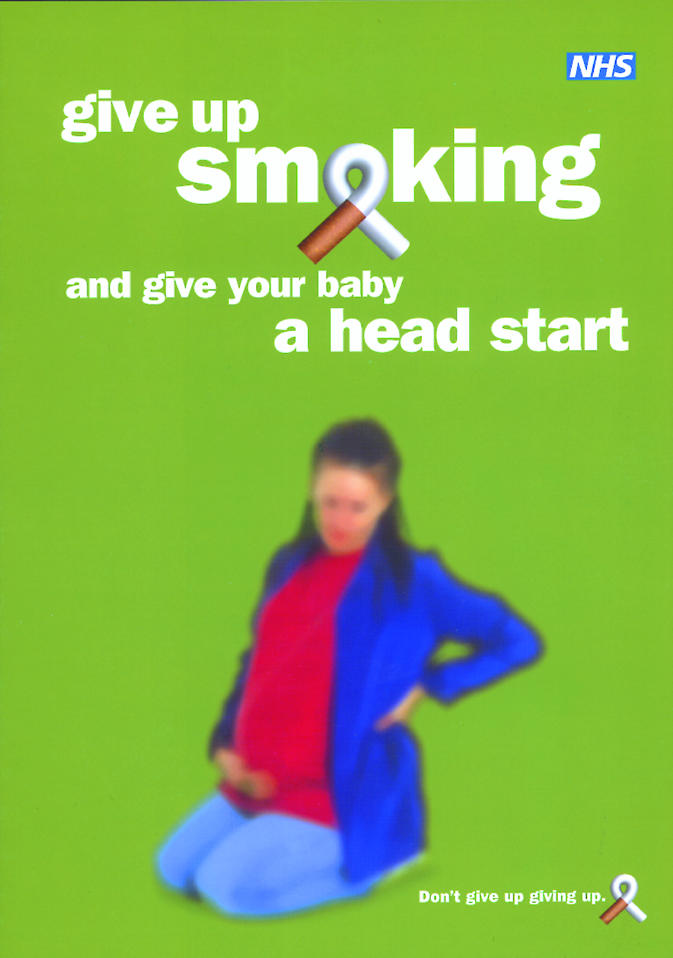The UK government's 1998 white paper on tobacco promised that £60m would be spent over three years to set up smoking cessation services in the NHS and that these services would be backed up by an advertising campaign. The campaign—“Don't give up giving up”—was launched in December 1999. This initial £5m media campaign comprises posters and six weeks of television advertising; it offers tips on giving up, testimonials from people with smoking related diseases, and a video diary of nicotine addicts trying to quit. All the advertisements feature genuine smokers: there is not an actor in sight.
The testimonials are particularly powerful. It would be surprising if the story of a 43 year old woman who died of lung cancer three weeks after filming didn't prompt many smokers to think again. The video diaries provide a day by day account of smokers' efforts to quit. They seem partly to be designed to remind smokers that they are not alone in trying to quit at the beginning of a new year and to convince them that they can succeed.
One unusual feature of the campaign is its explicit message that “relapsing is a natural part of the process ... lapses are OK.” This message is reinforced by one of the main characters in the video diaries. This aspect of the campaign was presumably designed to demonstrate an understanding of and empathy with smokers and to avoid finger wagging. Unfortunately the evidence from trials of smoking cessation consistently suggests that a lapse during the first weeks of trying to quit is predictive of a full relapse over the next year. The media campaign, however, is targeting a different population from that of clinical trials. And the hope must be that the advantages of supportive encouragement outweigh the hazards of reassuring smokers that an occasional cigarette is permissible when trying to give up.
A new freephone number replaced the Department of Health's old Quitline number just before the campaign was launched. A private call centre is now used to screen calls to decide whether to provide brief information or to transfer the caller to a Quitline counsellor. Another change from previous years is the prominence of NHS branding taking the place of the logos of the Health Education Authority and Quitline. These changes reflect a desire by the Department of Health for greater control of the campaign.
The most objective measure of the campaign's impact is the number and nature of calls made to the helpline compared with previous years. A press release from the Department of Health issued on 7 January quoted Yvette Cooper, public health minister, as stating that the number of calls was up 250% on last year. However, the Department of Health's analysis of the data for January shows that only 9% of callers were transferred to counsellors, and 82% were dealt with as simple requests for literature; the service provides a brief pamphlet about stopping smoking. Part of the reason might be that up until the end of January more than half of the calls were answered by an answering machine. In contrast, last year a trained counsellor answered 80% of calls.
When I first called the helpline I was greeted by a 64 second message asking me to leave my details. On another occasion my call was answered and dealt with efficiently by an operator. Inevitably services of this kind will be patchy when demand is heavy but it is troublesome that the proportion of calls being answered by a machine increased so markedly. In its wisdom, the Department of Health asked all organisations interested in bidding for next year's contract to run the helpline to submit bids by the first week of January 2000—right in the middle of its busiest period and immediately after the millennium celebrations.
Overall, the media campaign appears to have struck the right note with smokers and produced a rise in calls to the helpline which is roughly in line with what was expected with the increase in expenditure. However, there are doubts about the quality of the service provided by those screening the calls, the timing of the change in the helpline's number, and the timing of the tendering process for the next contract. Fortunately, now that the new year's rush has passed, over 90% of calls are being answered by a human. Perhaps the campaign's message should really be: “Don't give up on ringing up.”
Figure.

HEA
The government has spent £5m on this year's campaign


